How the caves at Nerja formed over millions of years to become one of Spain's most popular tourist attractions.
By Nick Nutter | Updated 5 Oct 2022 | Málaga | Places To Go |
Login to add to YOUR Favourites or Read Later
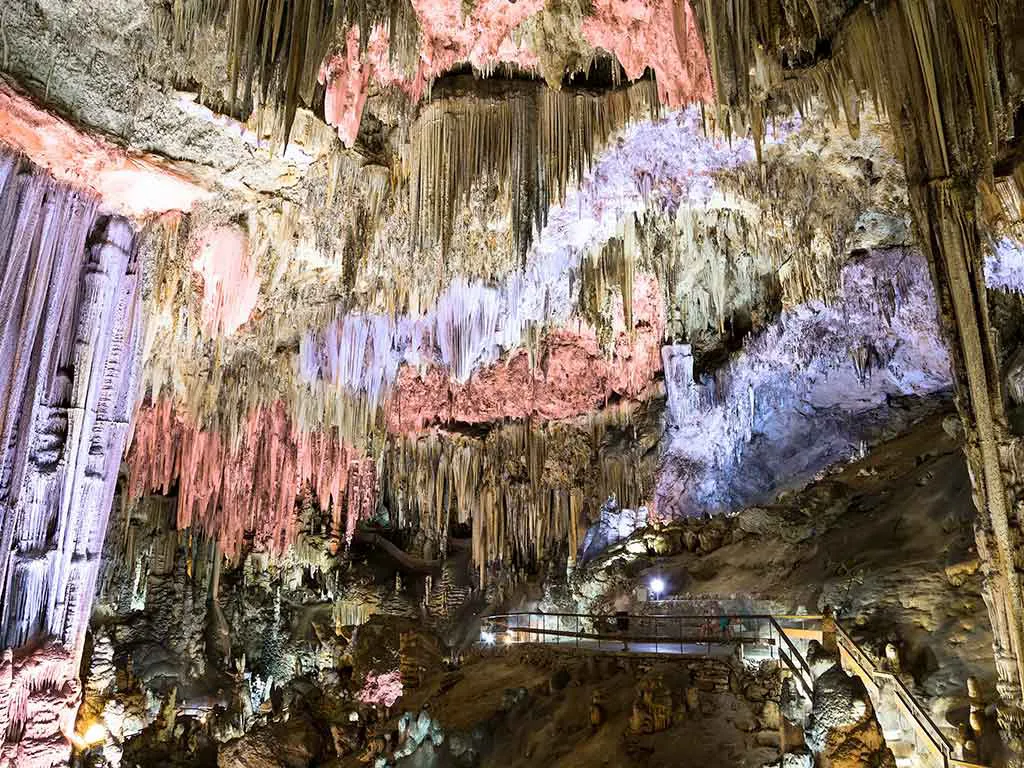
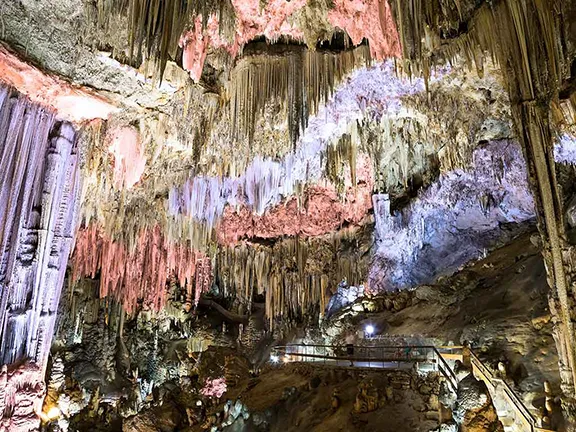
Calcite Flow at Nerja Caves
The magnificent caves at Nerja, Cuevas de Nerja, are a series of caverns close to the town of Nerja in Malaga Province. Stretching for over 5 kilometres, the caves are one of Spain’s most popular tourist attractions as well as being a venue for concerts that are held in the natural amphitheatre.
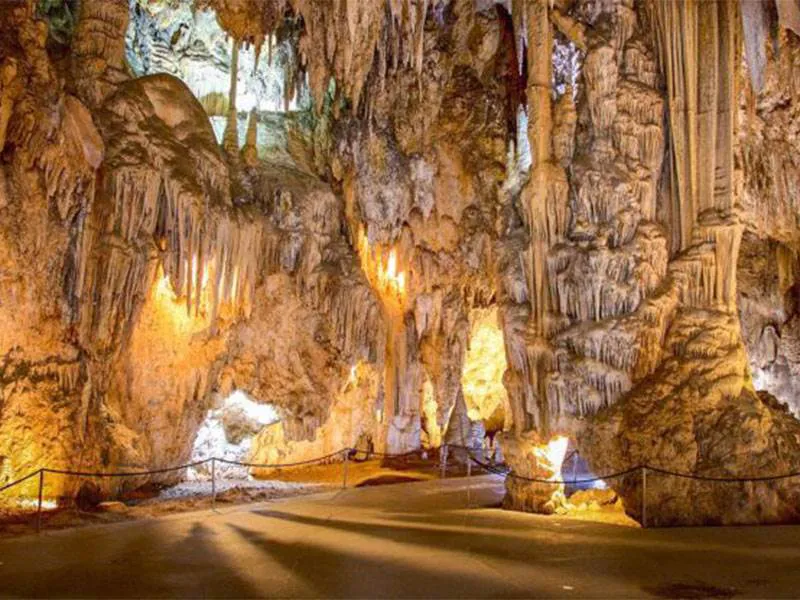
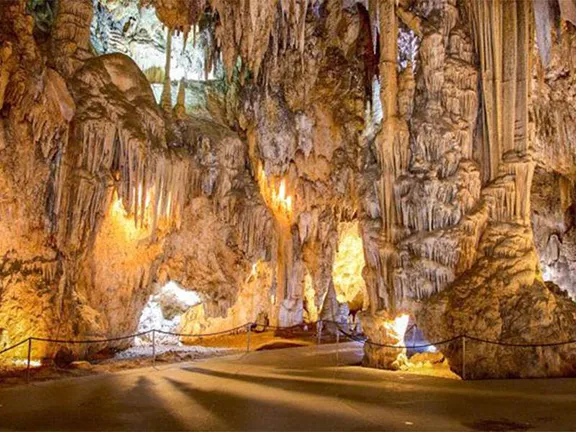
Show Cavern at Nerja Caves
200 million years ago, during the Triassic period, millions of sea creatures died over an immense period of time and left their calcium skeletons on the floor of the Tethys Sea. The deposits built up to hundreds of feet thick and compressed to make limestone. Then the Asian and African tectonic plates started to grind together about 65 million years ago and raised the limestone at Nerja into the air at the same time pushing the Sierra Nevada mountains up to become the highest range in Spain. This process took about 60 million years and still continues today in a small way. Once exposed to the air the limestone strata began to change under the influence of water seeping down from the surface. As it percolated through the cracks in the rock each drop of water dissolved a small amount of calcite, the mineral that makes limestone.
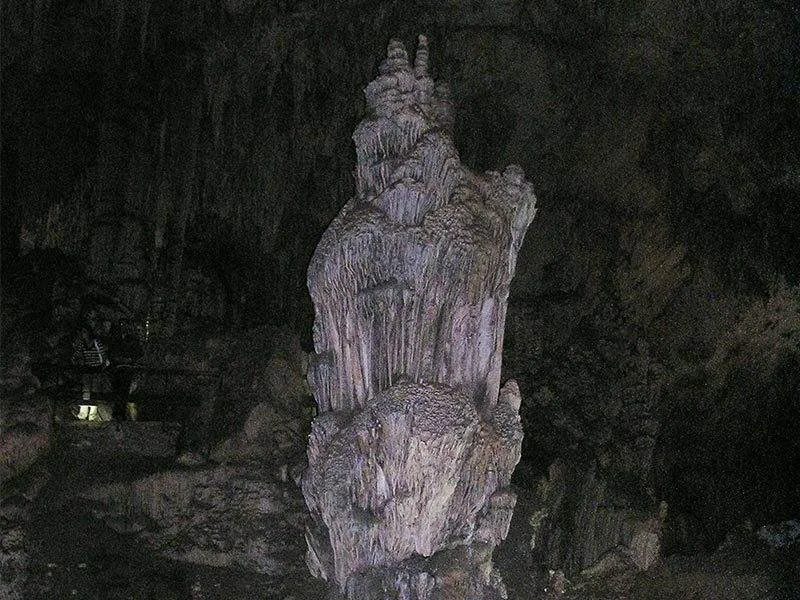
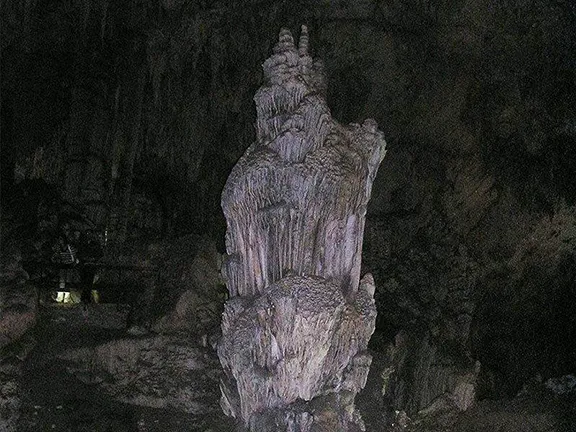
Column at Nerja Caves
Over a period of 5 million years, enough calcite dissolved to form the caverns we see today that are an incredible 7.2 kilometres long with a volume of 265,000 cubic metres. At the same time as the water was dissolving the calcite to form the caverns, it was depositing some as well. As water dripped from the ceiling each drop would leave a microscopic amount of calcite behind. Over long periods of time, they built up into stalactites hanging from the ceiling. Where the water hit the floor a corresponding tiny amount of calcite would be left behind which then formed a stalagmite. When the two tenuously meet and kiss for the first time the formation is called a straw and as the straw thickens it becomes a column.
How do you remember which grows up and which grows down? Simple. Stalactites with a 'C' grow from the ceiling whilst Stalagmites with an 'G' grow from the ground.
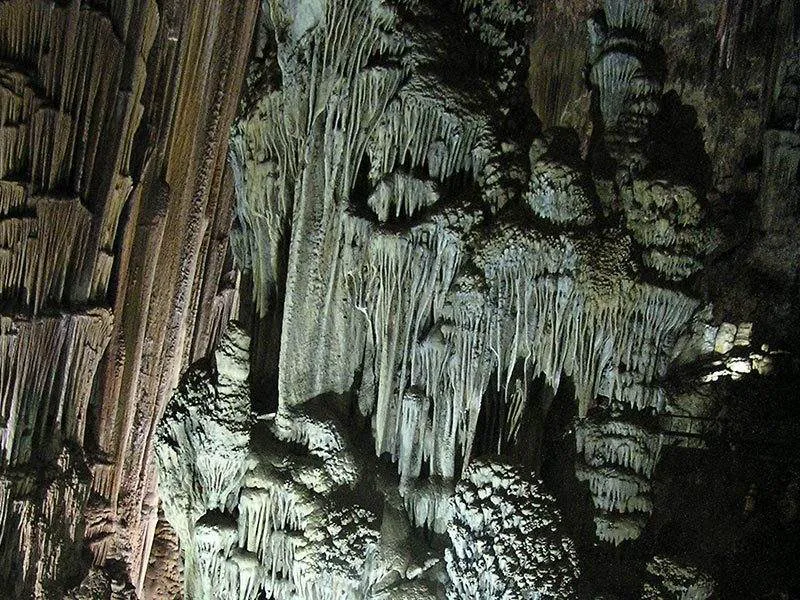
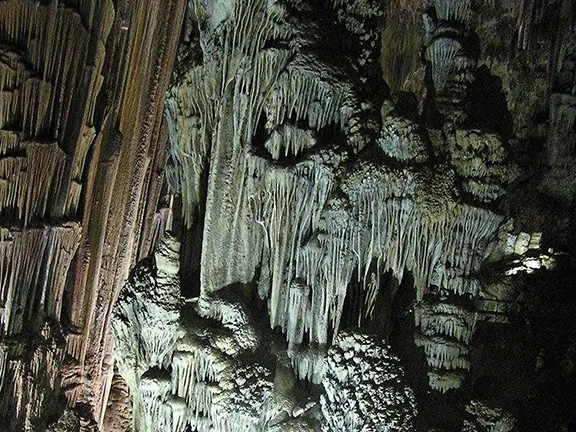
Calcite curtains at Nerja Caves
Yet more water flowed over harder limestone, again leaving calcite behind to form smooth calcite curtains and where conditions were right, perhaps influenced by a gentle draught of air, the curtains would hang vertically in great swathes that no interior designer could emulate. In the inky blackness where no light could possibly penetrate, the processes that made the cave introduced colour that would not be seen until man arrived millions of years later. Metallic minerals were extracted from the limestone at the same time as the calcite was dissolved. Copper ores colour the calcite blue or green, iron a coppery red, manganese will show black or grey whilst lead is seen as the brightest white or a translucent grey.
The unimaginable length of time taken to produce these wonders can be negated in an instant. About 800,000 years ago an earth tremor shook some of the massive curtains and stalactites loose from their ceiling anchors and they crashed to the floor of the cave. Around them the calcite depositing process continued, firmly cementing these new shapes in the place where they rest today. In the ceiling, new stalactites started to grow and now they are a few feet long, their internal growth rings, like those of a tree, faithfully recording the annual climate over the last millennia. Below there are the stalagmites slowly raising themselves into the air growing at the rate of 10cms every thousand years. Some form a smooth dome shape that are irresistible to human hands. The acid in the moisture on the palm of your hand can wipe away years of growth in an instant.
Within the caverns is a stalagmite 32 metres high and 13 metres by 7 metres at its base. It is claimed to be the largest stalagmite in the world.
In February 2012, a series of paintings were discovered in the caves at Nerja that were dated to about 42,000 years ago. They have been, tentatively, accredited to Neanderthals.
Around 30,000 years ago the first modern human ventured into the cave. He was a hunter-gatherer and made his home near the entrance, rarely venturing into the deepest recesses. The artefacts he and his relatives left behind produce a comprehensive history of human development. Between 18,000 and 14,000 BC the caves were used for inhumations as well as habitation. It was during this period that many of the 600 cave paintings were executed. The first bone fish hooks belonged to a culture that inhabited the caves between 14,000 and 10,000 BC and the ‘fish form’ paintings and stones decorated with geometric designs also date from this period. Shellfish started to form a major part of the diet.
A series of engraving tools, graters and painted stones mark the period from 12,000 to 9,000 BC and the grave of a young woman was also found from this time. After about 7,000 BC the group became more organised and it is possible to see how the Neolithic progressed with the diet improving to include different fruits and the first cultivated seeds. There are signs of domestic animals, dogs, goats and sheep and Neolithic jewellery, ornaments, loom weights and ceramics. Again some of the further galleries were used for inhumations during this time providing even more evidence of these people s lives. Burials continued up to the end of the copper age, around 4,000 years ago. Then about 2,000 BC a sudden storm swept rocks and earth into the entrance sealing it completely. The caves at Nerja kept their secrets until 1959 when humans once again found them.
Since opening to the public in 1960, the Cuevas de Nerja has been the setting for the Festival of Music and Dance. The tickets are a sell-out every year and little wonder, the cavern in which the performances occur is as dramatic a setting as you could imagine. Performers have included Rostropovich, Yehudi Menuhin, Maya Pilsetkaya, Kiri Te Kanawa and Jose Carreras.
Until the discovery of the caves, Nerja was a small, almost unknown, fishing village. Since the early 1060's it has grown to be one of the most popular tourist areas in Malaga province.
During the winter you can see the caves of Nerja for free if you get there before 0930 Monday through Friday. You can book a spot online but if all the spots are taken they also hold tickets for walkups and give them out starting at 0915. They have audio guidebooks for 1 Euro. Not good for people who can't walk up and down lots of steps
Check the official Nerja Cave Website here for opening hours and prices